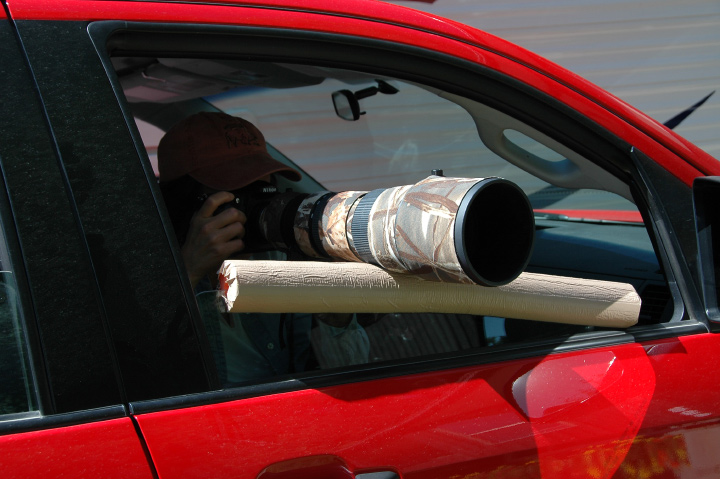
When I lived if Florida virtually 99.99% of my images were handheld using my Nikkor 80-400mm VR or Nikkor 70-300mm VR lenses attached to my Nikon D200. I found the weight of those lenses easy to carry all day long if needed and using them I was able to get closer to some birds without using a tripod.
I walked a lot there, sometimes up to 10 miles a day to get my images so weight was very important to me. Most of the time I was sitting in the waters of the Gulf of Mexico or in tidal lagoons. I was very comfortable hand holding all of the time. I very rarely used my Nikkor 200-400mm VR with or without the 1.4x TC in Florida. I sure didn’t want to mess up an expensive lens by getting sand in it or dunking it into salt water.
Then…I moved back out west to Utah. Photographing was very different than I was used to in Florida. The birds in Florida were used to human presence, that did not happen as often in Utah. In local parks the birds in UTah did seem to tolerate human presence well because they are exposed to them often.
But for the most part the birds here are a bit (or a lot) more skittish so I was often in a vehicle using it as a mobile blind. The birds seemed far less nervous about a parked vehicle than they did a person standing outside of it using a tripod, there are always exceptions to that though. Some times the birds or animals are so engrossed in what they are doing that they will ignore a person standing quietly.
I admit to having a very difficult time getting used to not hand holding all the time and shooting from the inside of a vehicle. I did not have the freedom or range of movement I was used to. I regrettably did miss shots that I would not have missed on foot because I can not move my lens 360 degrees when I am inside a “mobile blind”.
I felt as though someone had staple-gunned me inside of a vehicle thus restricting my my ability to move unfettered.
When I first started flying out west again to photograph I was using a hand towel on the window to protect the window and the exterior of the lens. That was awful though, the towel would fall or blow out the window and it only provided a minimum of protection for the lens that rested on it. So I thought of using “pipe wrap”, those long closed-cell foam tubes with a slit down one side that is used to help prevent household plumbing pipes from freezing. Well, those sort of worked but the foam is probably less than a half inch thick and it broke down very rapidly. It also could easily fly up off of the window while driving, even at slow speeds. So while it was a good idea, it wasn’t that great.
I hadn’t moved to Utah yet when I put my thinking cap back on and used my “noodle”.
So early spring in 2009 I went to Walmart in Utah and purchased a pool noodle, those garishly colored, closed-cell foam “Noodles” with a narrow hole the entire length that kids use in swimming pools and picked one up and tucked it under my arm. Then I purchased some Duct Tape.
I measured the length of the vehicle window and cut the Noodle to that length, used a knife to carefully cut halfway through the Noodle without slicing the other side of the hole in the middle. After completing that I placed more strips of Duct Tape to cover up the hideous orange color of the Noodle. I figured something that bright and hideous might scare away the birds or animals. After taping it and leaving an un-taped narrow area where the cut was I took it over and slid it down on the vehicle window.
(I now add thin strips of tape to the inside of the pool noodle where the window pushes on the interior, that protects where the noodles eventually crack and it prolongs the life of the noodle.)
I can rest my lens on the Noodle and have the ability to slide them from one side of the window frame to the other. I don’t have to worry about damaging the windows either. The windows can be adjusted to the height I desire by rolling it up and down.
The Noodles can last a long time, but you shouldn’t squeeze the Noodle too tight often or it begins to split a line open on the inside. Note: that can happen when the driver of the vehicle hits the wrong button repeatedly. When new you can drive down a road with the Noodle slipped over the window edge at speeds in excess of 55 mph and the Noodle will stay put. As they age they do loosen a bit where the split is though so you might need to close the window up some to keep it in place.
A downside: You have to keep your hands on your gear, there isn’t a lens mount to keep the lens attached. I don’t find that to be an issue though as I just lay my gear over my lap or put it on my lens caddy when I am not using it.
The Duct Tape does at times squeak, you can resolve that issue by lightly buffing the Duct Tape with a medium grade sandpaper. When the Noodle wears out (splits) just make a new one. They pack easy too!
Total cost for three Noodles:
The Noodle: Around $1.88
The Duct Tape: $3.54 for a large roll.
That equals $5.42 divided by 3 is $1.80.
Yes, only $1.80 per Noodle in 2009 prices.
(It is a tiny bit more expensive for the thicker pool noodles)
A heck of a lot less expensive than spending $50 to $70 on a manufactured bean bag!
The Noodles help by stabilizing the lens better than just the edge of a window and the closed cell foam not only protects the glass and the exterior of the lens it also helps by absorbing the movement of the camera caused when the shutter button is depressed.
Using my “Noodle” didn’t given me back the range of movement I had while photographing on foot handheld that I had in Florida but it sure has made photographing from the window of a mobile blind a much more pleasant experience.
So that is how I use my Noodle when photographing birds and animals. Click one of the images below to see more images of the Noodle.


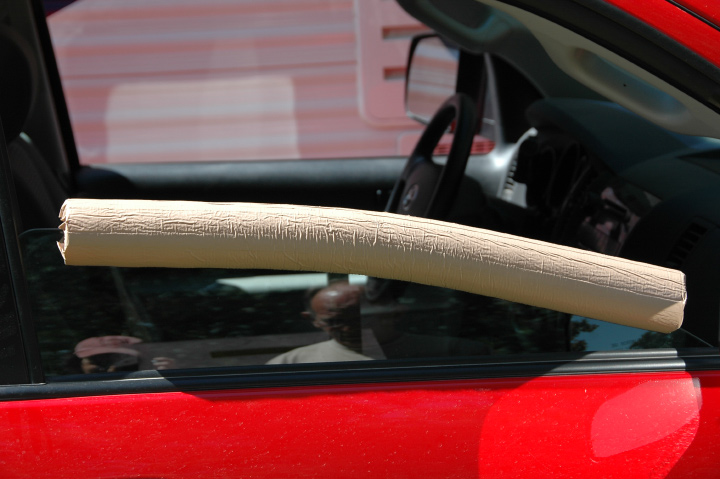
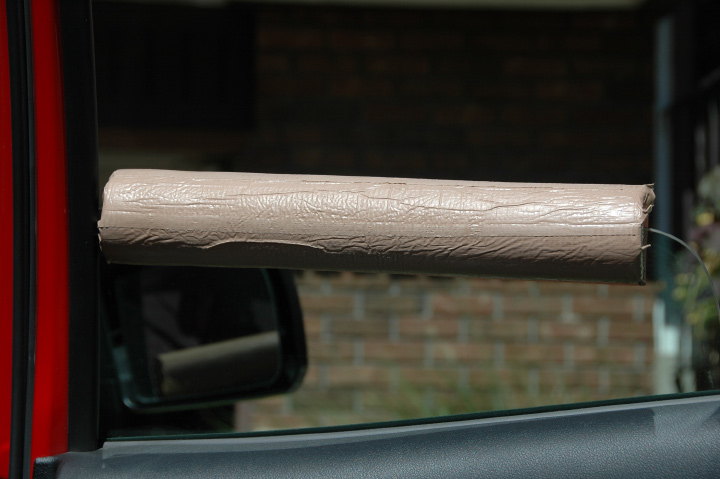
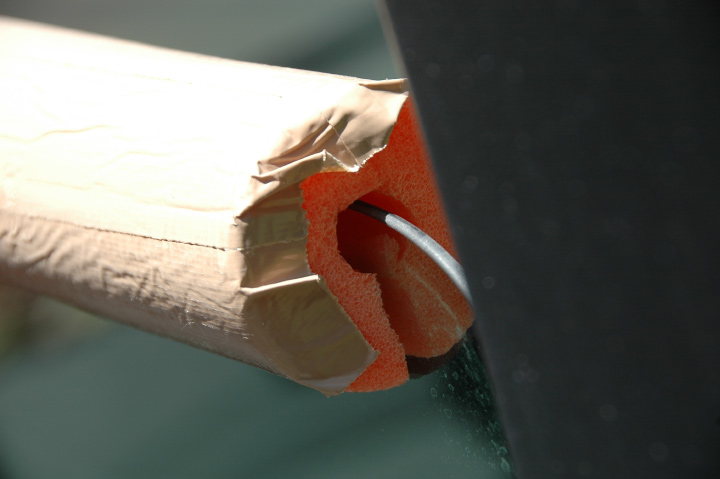

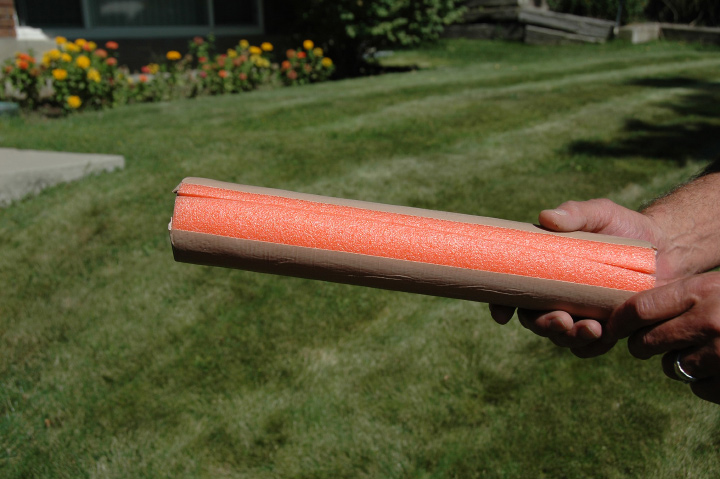

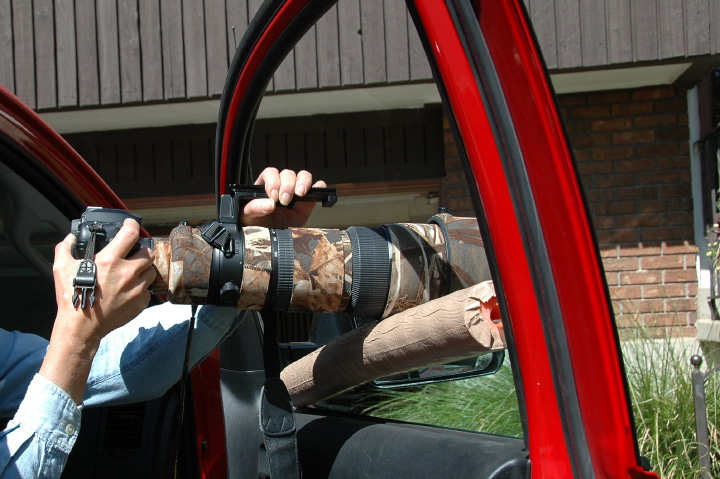
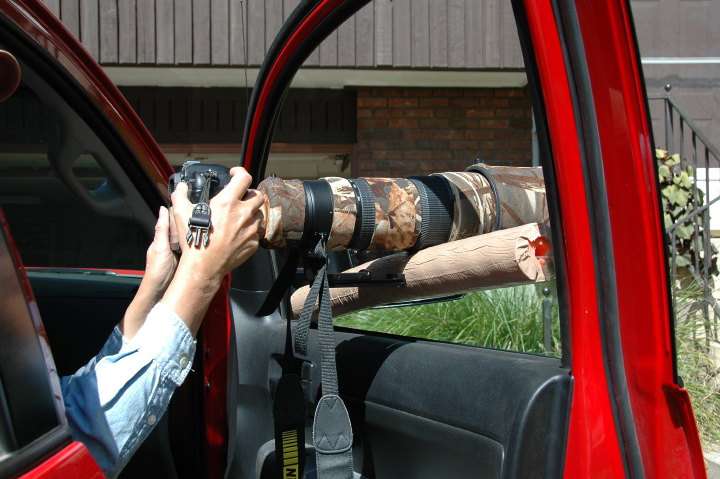
What a great idea! I came across your site by searching my own name and “bird photos”! ?? I’m reading your blog about frustrating images (the branch in front of the kingfisher). How I can relate!! signing up for your blog posts.
Just found your site and your amazing work, and glad I did! Brilliant work!
Wow! Love this. Thank you for sharing. I have some longer lenses and have had issues with blur due to weight, seeking to find ways to stabilize the ends. This is brilliant. Thank you!
I just came across your site for the first time.
The noodle technique is something I have used for years.
Hi Allen, they work well!
HI Mia; I was going to suggest Camp tape for your noodle, but with your RED car, I’m not sure that would make much difference (LOL). Home Depot or Lowes in Ogden has “pipe insulation” in various sizes for about the same price (I use them with Camo tape on my tripod legs; very effective and very long lasting). Believe I’ll make some up for my window as well. Ciao! Ron
Hi Ron, the red pickup was a friend’s vehicle not mine although at the time I had a red Jeep Cherokee, my Jeep now is silver and I use camo duct tape when I can find it for new noodles.
My noodle served me well until becoming airborne at 50 MPH. It’s now freeway jetsam in Northern California. They do stick to window very well, but have a limit. Fortunately I have enough material for a spare.
Vic, I had one blow out a window too but I was able to back up and retrieve it. It was older though and had loosened up some.
Do you shut the car off when you are photographing with the noodle, or is it enough to absorb the shutter of the car’s motor running?
Heather, I always shut off the vehicle prior to photographing from inside it. With long lenses they pick up vibration easily.
Brilliant and clever! I definitely need to make one of these…. I also use my car as a mobile blind at times.
So very creative!! If I ever get a lens that I need to support this will be my first thought!
Thanks Mia!
A great idea ! I will be trying this out soon.
Thanks
Colin Dunleavy
Great Idea–who would have thought! Will get on that right a way!
Thanks! Since I am a “noodle-head”.
Thanks for the idea – Excellent I will make one tomorrow!!
Really interesting idea, I have been a big fan of a homemade giant beanbag for stability and support.
Great idea Mia!
Brilliant! Love it! Thanks for sharing the idea.
Your photos are amazing.
Voting for your site over at In Flow…
Tnx for the article Mia, did you know there’s one called “big Boss Noodle” now? Its twice as thick and amazing support for the big glass. Can’t beat the investment!
Pretty cleaver idea. On the Bear River Refuge drive the birds take off when I get out of the car, as you wrote. I’ll give it a try. Thanks for sharing Mia.
Noodle is a great idea…must admit I got a kick out of you’re concern about its garish color needing to be toned down with duct tape…so you could takes pictures from a bright red truck!
Hi Patty, the pick up is gray now! The birds never did seem to mind the red pickup but the noodles are such garish colors that maybe I put the tape on to protect my eyes! LOL
Wow! That’s really using your noodle. What a great idea.
What a great idea.
Thanks Gladys!
Thanks for sharing this Mia, it’s brilliant!